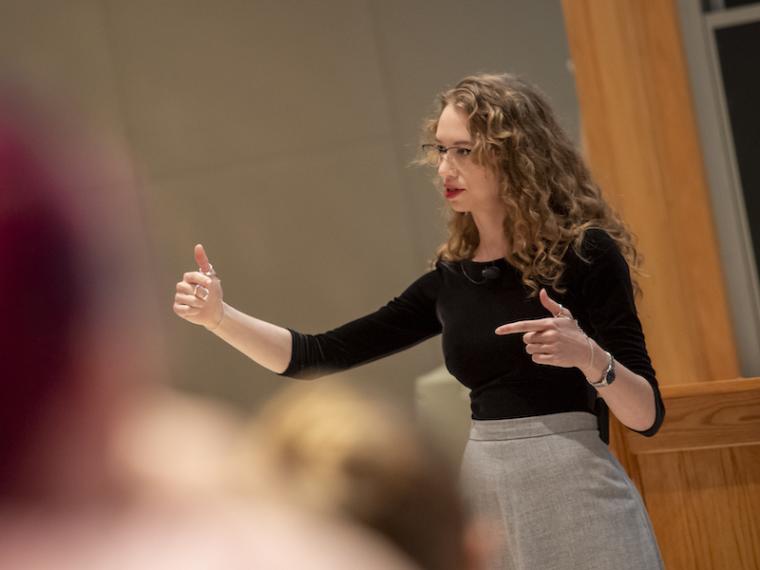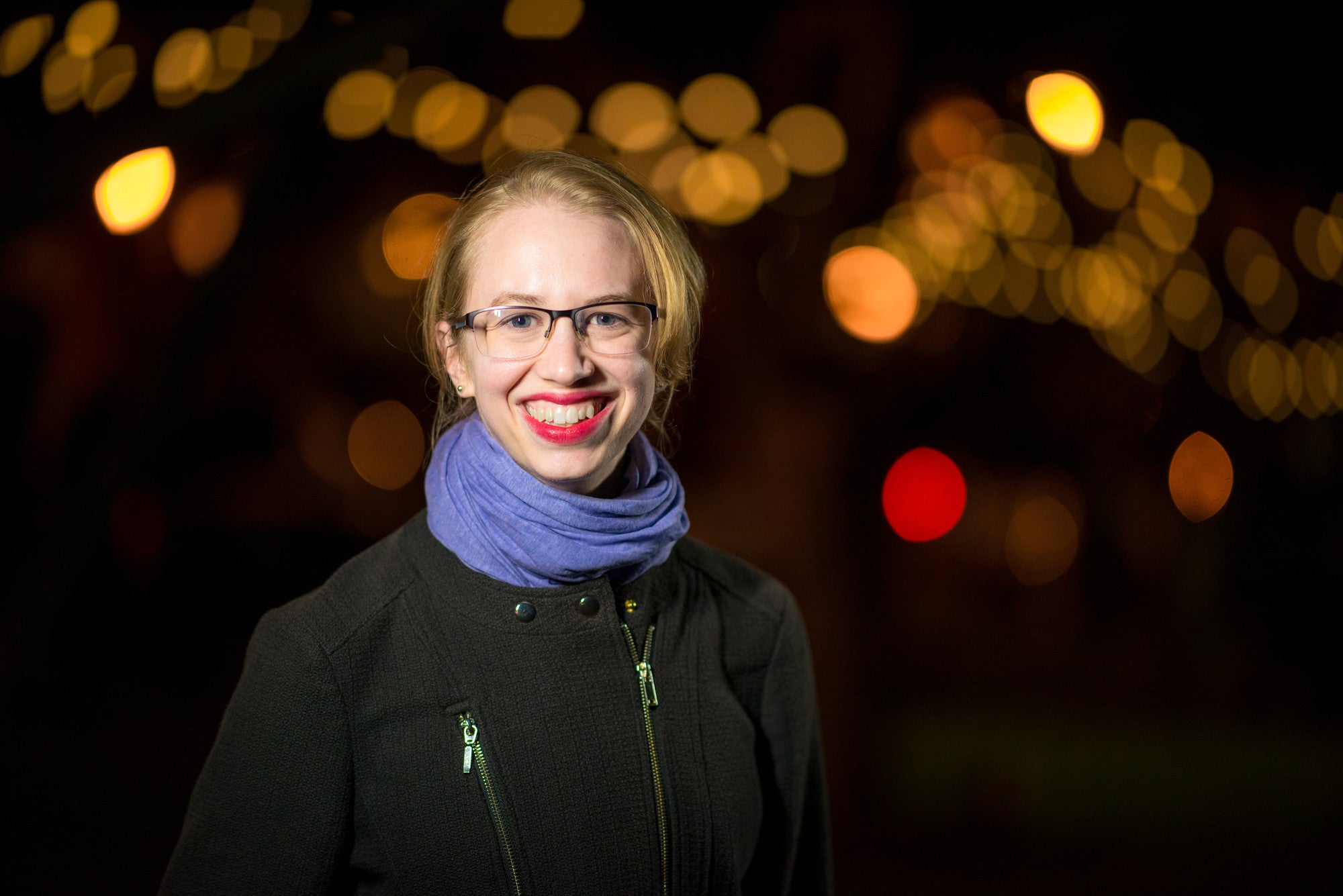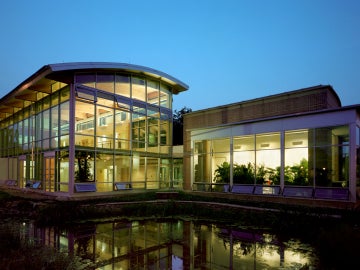Oberlin Alumni Magazine
Three Things with Jillian Scudder
Oberlin’s astrophysicist-author shines a light on our dark universe.
January 24, 2024
Communications Staff

Photo credit: Matthew Lester
Jillian Scudder is an associate professor of physics and astronomy at Oberlin. Her research focuses on understanding how relatively nearby galaxies operate, studying the contents of their gas, and how they form new stars. She’s been writing about space for the general public since 2013 and has published three books with the same audience in mind: Astroquizzical (Icon Books), Astroquizzical: The Illustrated Edition (MIT Press), and The Milky Way Smells of Rum and Raspberries (Icon).
In summer 2022, Scudder earned a $229,000 grant from the National Science Foundation to support continued research on our understanding of galaxies in the nearby universe. Here she shares three things about her exploration of the cosmos.
1. We do almost all of our exploring from home.

Photo credit: Yevhen Gulenko
This one is partially for convenience—if your devices are close to home, they’re easier to repair—and partially because space is unpardonably huge. With the exception of our robotic explorations of our own solar system, all of our understanding of the larger scope of the universe has been built from observations either from terra firma on Earth, telescopes in low earth orbit (like Hubble), or telescopes in stable places nearish to Earth (1 million miles, give or take), where the recently launched Webb Space Telescope was placed. Even to travel 1 million miles, spacecraft take close to a month to arrive; to escape our cosmically small solar system—as the Voyager spacecraft have done—we’re looking at more like a 30-year journey. Launched in 1977, Voyager 1 is the most distant artificial object from Earth, having left the solar system in 2012. In 2022 it celebrated 45 years of continuous operations, making it also the longest space mission still running.
2. Our view of the cosmos changes dramatically depending on what tools we use to look at it.
Our eyeballs are relatively tiny observatories of the universe, and are well-matched to the kind of light that our sun produces a lot of—which we have tautologically called “visible light.” But this is only a narrow sliver of the full range of light that objects in space can produce, and so to get a more complete accounting of what’s out there, we have to observe using devices that are sensitive to many different kinds of light. From X-rays to infrared, to radio—each one provides a unique view of our universe: X-rays can tell us about profoundly energetic clouds of gas; infrared can see the glow of warm dust and newly forming stars; and radio can see the improbable glow of hydrogen atoms drifting inside far-off galaxies.
“The nearest star is so distant that light takes a little more than four years to reach us—and that’s the nearest star in the galaxy we live in.”
3. We see into the past.
Because of the tremendous distances involved between any two things in space, even light—mostly instantaneous on human scales—takes a long time to traverse the void. At 300,000 kilometers every second, it’s zippy, but even the sun is roughly 150 million kilometers away; light takes about eight minutes to travel that far. The nearest star is so distant that light takes a little more than four years to reach us—and that’s the nearest star in the galaxy we live in. By the time we start looking at other galaxies, the light we receive isn’t just minutes out of date; it’s often billions of years old. That light has been traveling the spaces between galaxies and stars for so long that we’re no longer looking at things as they are, but as they were, when the light was released out into space. The more distant objects are also the furthest into the past, and serve as ancient beacons of what the universe was like, eons ago.
This story originally appeared in the Winter 2023 issue of the Oberlin Alumni Magazine.
You may also like…
Research Roundup
Every day, Oberlin’s faculty and students produce scholarly work that uncovers new insights into how we understand the world, particularly in the areas of sustainability and the environment.
Building a Legacy
As the Adam Joseph Lewis Center for Environmental Studies turns 25, Oberlin's world-changing alums carry its impact forward.
Another Green World
Ten ways Oberlin builds sustainability into campus life—via academics, internships, activities, and so much more.


